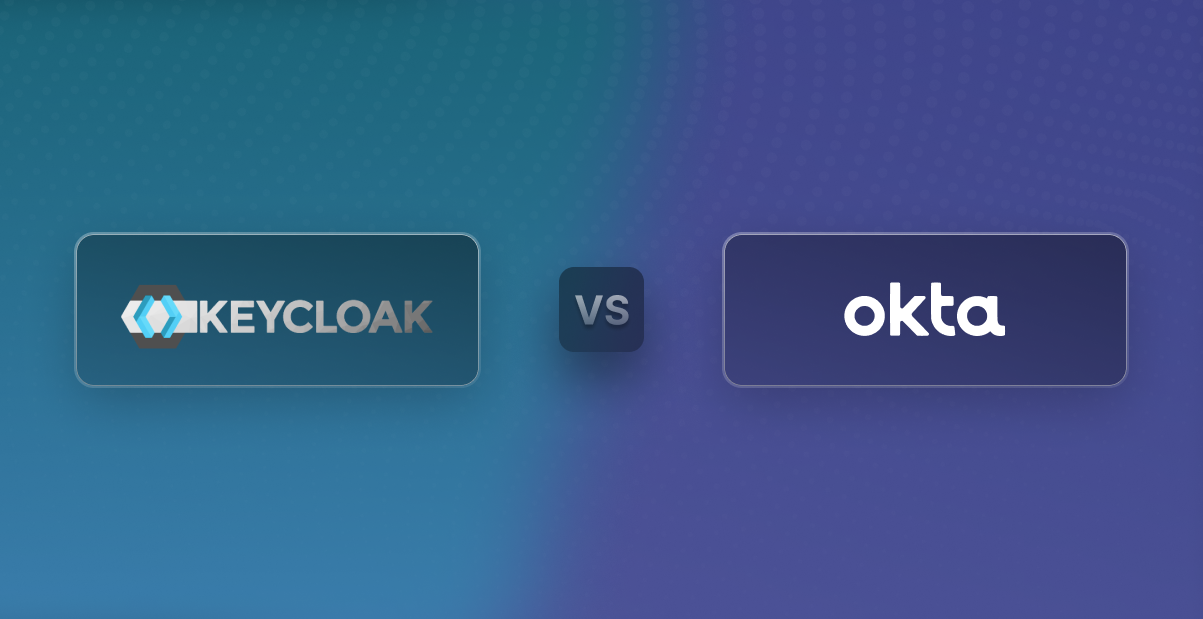Table of Content
- Introduction
- Overview: Keycloak vs. Okta
- Detailed Feature Comparison: Keycloak vs. Okta
- Deciding Factors: When to Choose Keycloak or Okta
- Open-Source vs. Proprietary IAM: Key Considerations
- Developer-Friendly Alternatives to Keycloak and Okta
- Conclusion
Introduction
Picking the right identity and access management (IAM) solution can be quite a challenge. Choosing the wrong one can lead to security vulnerabilities, inefficient resource usage, and a bad user experience.
Imagine dealing with frequent security breaches, ineffective access controls, or constant system downtime because of an inadequate IAM solution. These issues can slow down your team, disrupt vital business operations, and put sensitive data at risk. Fixing these problems often consumes valuable time and effort that could be better spent on driving essential projects forward.
In this article, we’ll compare Okta and Keycloak, looking at their strengths and weaknesses. This will help you make an informed decision on an IAM solution that enhances security, improves efficiency, and provides a seamless user experience.
Overview: Keycloak vs. Okta
Keycloak
Keycloak is an open-source IAM solution that has gained significant traction in recent years. Developed by Red Hat, it offers a robust set of features including single sign-on (SSO), identity brokering, and social login capabilities. Keycloak’s open-source nature allows for extensive customization and community-driven development, making it an attractive option for organizations that value flexibility and control over their IAM infrastructure.
Okta
Okta is a proprietary, cloud-based IAM platform that has established itself as a leader in the enterprise market. Okta offers a comprehensive suite of pre-built integrations, multi-factor authentication (MFA), and an intuitive admin interface. Its focus on simplicity and out-of-the-box functionality has made it a popular choice for businesses looking for a turnkey solution with minimal setup and maintenance overhead.
Detailed Feature Comparison: Keycloak vs. Okta
Comparison Table
| Feature | Keycloak | Okta |
|---|---|---|
| Single Sign-On (SSO) | Yes | Yes |
| Multi-Factor Authentication (MFA) | Yes | Yes |
| Social Login | Yes | Yes |
| Identity Brokering | Yes | Yes |
| User Federation | Yes | Yes |
| API Access Management | Yes | Yes |
| Pre-built Integrations | Limited | Extensive |
| Customization | High | Moderate |
| Deployment Options | On-premises, Cloud | Cloud-based |
| Pricing Model | Open-source (Free) | Subscription-based |
| Enterprise Support | Community + Red Hat | Dedicated Support |
| Self-hosted Option | Yes | No |
Security Features Breakdown
Authentication Methods
Keycloak offers various authentication options, such as usernames and passwords, one-time passwords, Kerberos, X.509 client certificates, and social logins. Okta also provides multiple login options, including MFA, adaptive MFA, social login, and biometric authentication through mobile devices. Keycloak’s open source nature allows a level of flexibility that is not possible with
User Roles and Permissions
Keycloak features a flexible role-based access control (RBAC) system, allowing administrators to define roles with fine-grained access controls. Okta uses a group-based access management system, facilitating user groups with application-specific permissions.
Customization & Flexibility
Authentication Flow Customization
Keycloak allows for highly customizable authentication flows through its flow designer or custom authentication providers. Okta, while less flexible, offers API-driven options for custom authentication experiences.
Theming and Branding
Keycloak provides a theming engine for full control over login pages, admin console, and email templates. Okta’s Admin Console allows for logo and color customization, though it offers less control than Keycloak.
Integrations and Ecosystem Support
Third-Party Service Integrations
Okta provides over 7,000 pre-built integrations with cloud services, making it ideal for SaaS-heavy organizations. Keycloak, while lacking extensive pre-built integrations, supports SAML, OAuth 2.0, and OpenID Connect, allowing integration with various services.
Cloud and On-Premises Support
Keycloak supports both cloud and on-premises installations, which is beneficial for organizations with data sovereignty needs. Okta excels in cloud-based workloads, with limited on-premises integration via Active Directory and LDAP agents.
Scalability and Global Deployment
Okta’s cloud-based infrastructure supports global deployment and horizontal scalability. Keycloak also supports large-scale deployments but requires hands-on management for horizontal scaling with load balancing and clustering.
Pricing Models and Affordability
Keycloak’s Open-Source Advantage
As an open-source solution, Keycloak is free, although organizations must consider hosting, maintenance, and potential enterprise support costs.
Okta’s Subscription Tiers
Okta uses a subscription-based model with Workforce Identity and Customer Identity plans. While the subscription model may be more predictable, it can become costly for organizations with a large user base.
Developer Experience and Community Support
Keycloak
Keycloak benefits from a large open-source community, offering rapid development, community-contributed extensions, and extensive documentation. Community support is provided through forums and GitHub issues.
Okta
Okta offers a streamlined developer experience with comprehensive documentation, SDKs, and a user-friendly developer dashboard. Higher-tier subscriptions provide 24/7 support and access to a knowledge base.
Deciding Factors: When to Choose Keycloak or Okta
When to Choose Keycloak
- Small and Medium-sized Businesses with Technical Expertise: Organizations with strong in-house development teams.
- Projects with Unique Authentication Requirements: Where extensive customization is required.
- Highly Regulated Industries: Sectors with strict data sovereignty requirements.
- Open-Source Advocates: Those prioritizing open-source solutions.
- Cost-Sensitive Projects: Organizations able to manage their own IAM solutions.
When to Choose Okta
- Enterprises with Diverse Application Ecosystems: Organizations requiring seamless integration.
- Rapid Deployment Needs: When time-to-market is critical.
- Limited In-House IAM Expertise: Prefer managed services to reduce IT workload.
- Global Operations: Multinational companies needing consistent global performance.
- Compliance-Driven Organizations: Businesses needing built-in compliance features.
Open-Source vs. Proprietary IAM: Key Considerations
- Flexibility vs. Managed Service: Keycloak offers unparalleled flexibility, while Okta provides a managed, update-ready service.
- Community vs. Enterprise Support: Keycloak relies on community support, whereas Okta provides SLA-based support.
- Cost Structure: Keycloak’s free, open-source nature contrasts with Okta’s subscription model.
- Vendor Lock-in: Okta’s proprietary solution may limit adaptability, while Keycloak allows flexibility for future changes.
Developer-Friendly Alternatives to Keycloak and Okta
SuperTokens
SuperTokens is an open-source authentication solution that balances Keycloak’s flexibility with Okta’s ease of use, offering customizable login flows, pre-built UI components, and both self-hosting and managed service options.
Auth0
Owned by Okta, Auth0 is known for its developer-friendly approach and extensive documentation. It suits organizations wanting Okta’s reliability with a focus on developer experience.
Conclusion
Choosing between Keycloak and Okta depends on organizational needs. Keycloak offers flexibility and control, suitable for tech-savvy teams with unique requirements. Okta provides a managed experience that can reduce IT burden. Factors such as team skills, budget, compliance, and scalability should be considered. Alternatives like SuperTokens may also be a good fit based on specific project requirements.
For more information on IAM solutions and alternatives, check out our articles on Keycloak alternatives and Okta’s acquisition of Auth0.

